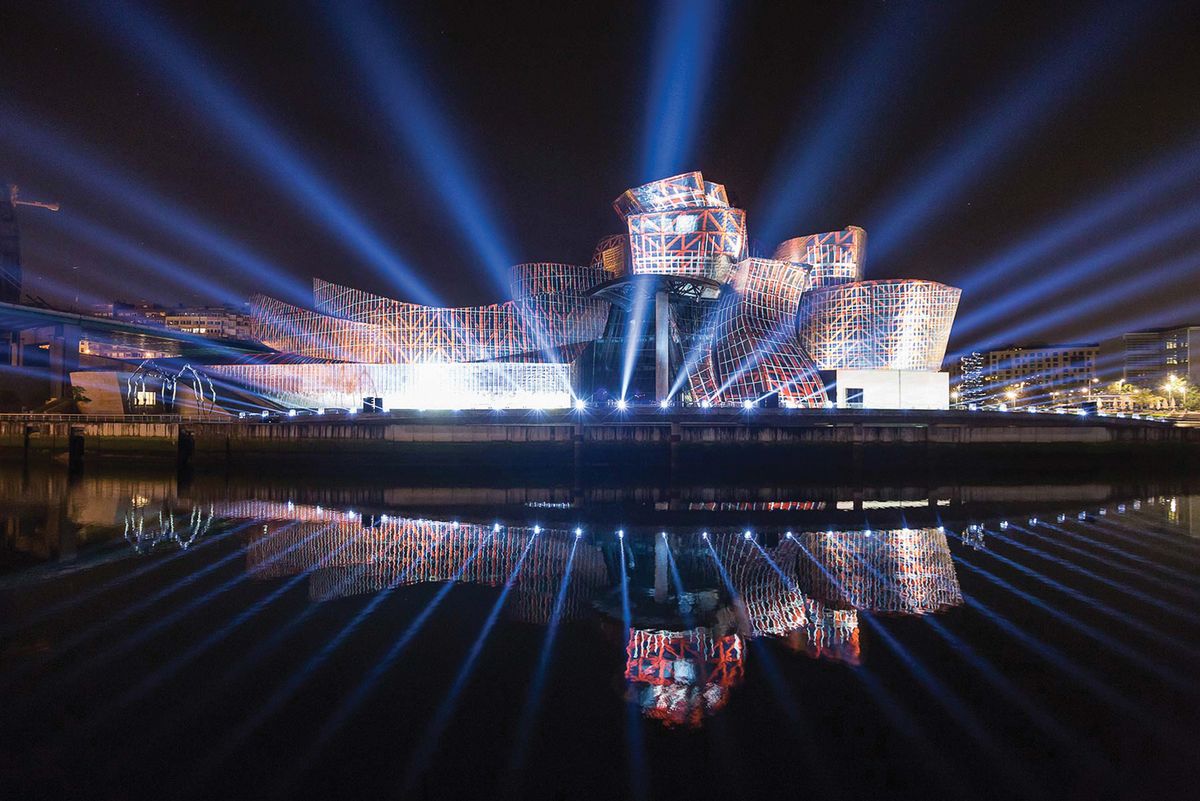The conversation that set the course for a Guggenheim museum in Bilbao lasted “no more than half an hour”. So remembers Thomas Krens, the maverick director of New York’s Solomon R. Guggenheim Foundation between 1988 and 2008, who pursued a controversial strategy for global expansion far beyond the Frank Lloyd Wright-designed flagship on New York’s Fifth Avenue.
The Guggenheim Museum Bilbao, which turned 20 last month, is now inseparable from the so-called “Bilbao effect”, the elusive process by which an architecturally flashy cultural project revitalises an ailing post-industrial city. But, as the museum’s longstanding Basque director, Juan Ignacio Vidarte, stresses, the Frank Gehry-designed, titanium-clad behemoth was in fact part of a much wider urban regeneration scheme backed by the municipal, provincial and regional authorities of Bilbao.
Visitor numbers pay off
Disastrous floods in 1983 led to a plan to clean up the city’s polluted river and decaying waterfront, where the museum sits. Public funding was poured into Norman Foster’s metro system (1995) and Santiago Calatrava’s international airport terminal (2000).
“For a cultural project to be transformative, it needs to have a number of ingredients,” Vidarte said at a 20th anniversary press briefing in June. “It needs to be part of a broader plan; it cannot be isolated. There has to be a balance between the ambition and the resources to keep that project moving.”
The statistics certainly attest to an enduring Guggenheim effect in Bilbao. Despite a slight dip in attendance after the 2008 financial crisis, the museum has welcomed more than 20 million visitors—two-thirds of them from abroad—since it opened on 19 October 1997. In a city of around 350,000 people, the original feasibility study calculated that 400,000 visitors a year were needed to justify the initial expense (estimated at $228m by the economist Beatriz Plaza) and ongoing subsidy (currently around €9m a year).
The costs have been repaid many times over. According to annual economic impact studies commissioned by the museum, it had, by the end of last year, contributed €4.3bn to the GDP of the Basque Country and generated €659m in additional tax revenue for the region—which has fiscal autonomy from Spain. The 130-strong collection of post-war and contemporary art, acquired over the years for €110m, was valued at €729m by Christie’s in 2015.
How it happened
In the early 1990s, a deal with the Guggenheim was unlikely. At the time of Krens’s first meeting with the Basque government in April 1991, Bilbao was in the grip of a terrorist campaign by the ETA separatist movement and the Guggenheim’s interest in Spain was focused on Madrid. A two-year world tour of masterpieces from its collection—launched while the New York museum was closed for renovation—included a stop at the capital’s Reina Sofia museum. The foundation was still in talks for a proposed branch carved into a mountain near Salzburg and a long-term lease on Venice’s Punta della Dogana (eventually assigned to François Pinault) as a second space after the Peggy Guggenheim Collection.
The daunting terms set by Krens were that “all costs, operating and capital, would have to be borne by the Basque government”, while all responsibility for “aesthetic decisions”, including the architecture, collection and programming, lay with the Guggenheim, he says. “We could not afford to [have] our name and brand diluted any more than Coca-Cola would rent its name for any soft drink to any other manufacturer or bottler.” The Basques faced pressure from the Spanish Socialist party to postpone the project, Krens says, while local opponents criticised the cultural imperialism of a “McGuggenheim” which pocketed a €20m fee upfront.
A more equal footing
Despite these obstacles, a 20-year contract was signed in 1994, with a possible extension of up to 75 years. It was renewed for another two decades in 2014. The museum now pays the New York foundation €1.9m a year (a cheaper arrangement than the previously variable costs, according to El Pais) but has “equal footing” in the partnership. The foundation agreed to provide a six-month loan show drawn from the Guggenheim collection every two years and, in New York, a place on the board of trustees for a Bilbao representative, a curator post dedicated to the Bilbao museum, a programme for young Basque artists and internships for Basque students.
“The [Bilbao] effect is not just to build a building; [it’s] to build an institution that works,” Vidarte said in June. “Despite what’s been said many times, the model has not been the franchise model… Despite the fact that we share the family name, we are a distinct institution.”
• For more on six other global Guggenheim museums that were designed, but never opened, click here


